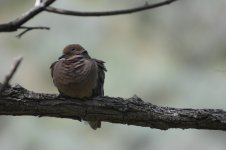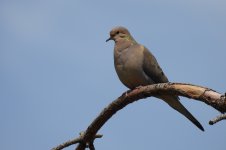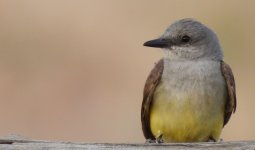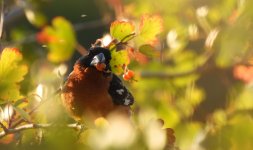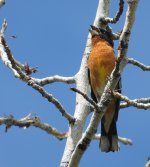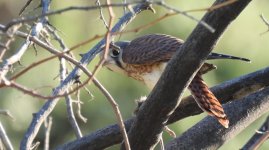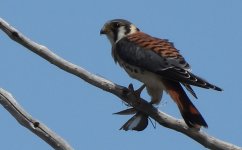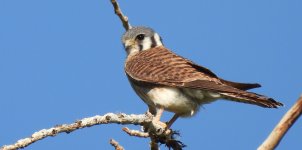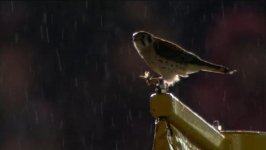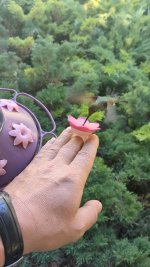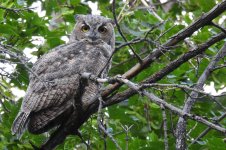Proud2baLaker
Master of Science
I went on a birding hike yesterday and had a pretty good day overall. While I did not take a ton of pictures, I did see a fair number of cool birds. I also heard 2 birds that I could not find visually. One I have never seen so that was a big bummer. The other, I have seen but have yet to get pictures.
While driving away, I went through an area that has some different habitat looking for more desert/sage brush type birds. Then, after stopping to identify a different bird, I saw one I had been searching for again and again after seeing it 5 years ago. The Loggerhead Shrike.
Lets skip right to the coolest fact of these birds. They are sometimes referred to as The Butcherbird. Shrikes will take prey as large as themselves including insects, reptiles, small mammals and other birds. The Loggerhead clocks in at 7-9 inches long so they can take some large prey. Smaller insects they will eat right away. Other large prey, they will impale on thorns and/or barb wire to make tearing it apart easier. This also allows them to create a cache of a food supply and there is some speculation that this behavior may also help to identify territory, or maybe attract a mate. They have also learned to impale potentially noxious prey and wait for a few days for the poisons to break down before eating.
They can be found through much of the United States with the northern US mostly being only during the breeding season. Typically will find them in more open habitat like fields or scrub land. Though they can be found in some heavily wooded areas that contain large openings in areas. Numbers have dropped sharply in the last 50 years or so especially in the northeast and upper midwest.
I did not get a ton of photos. But the bird was only maybe 20 feet from me perched on a barb wire fence so I was able to get a couple of fairly good quality photos.

While driving away, I went through an area that has some different habitat looking for more desert/sage brush type birds. Then, after stopping to identify a different bird, I saw one I had been searching for again and again after seeing it 5 years ago. The Loggerhead Shrike.
Lets skip right to the coolest fact of these birds. They are sometimes referred to as The Butcherbird. Shrikes will take prey as large as themselves including insects, reptiles, small mammals and other birds. The Loggerhead clocks in at 7-9 inches long so they can take some large prey. Smaller insects they will eat right away. Other large prey, they will impale on thorns and/or barb wire to make tearing it apart easier. This also allows them to create a cache of a food supply and there is some speculation that this behavior may also help to identify territory, or maybe attract a mate. They have also learned to impale potentially noxious prey and wait for a few days for the poisons to break down before eating.
They can be found through much of the United States with the northern US mostly being only during the breeding season. Typically will find them in more open habitat like fields or scrub land. Though they can be found in some heavily wooded areas that contain large openings in areas. Numbers have dropped sharply in the last 50 years or so especially in the northeast and upper midwest.
I did not get a ton of photos. But the bird was only maybe 20 feet from me perched on a barb wire fence so I was able to get a couple of fairly good quality photos.

Last edited:

